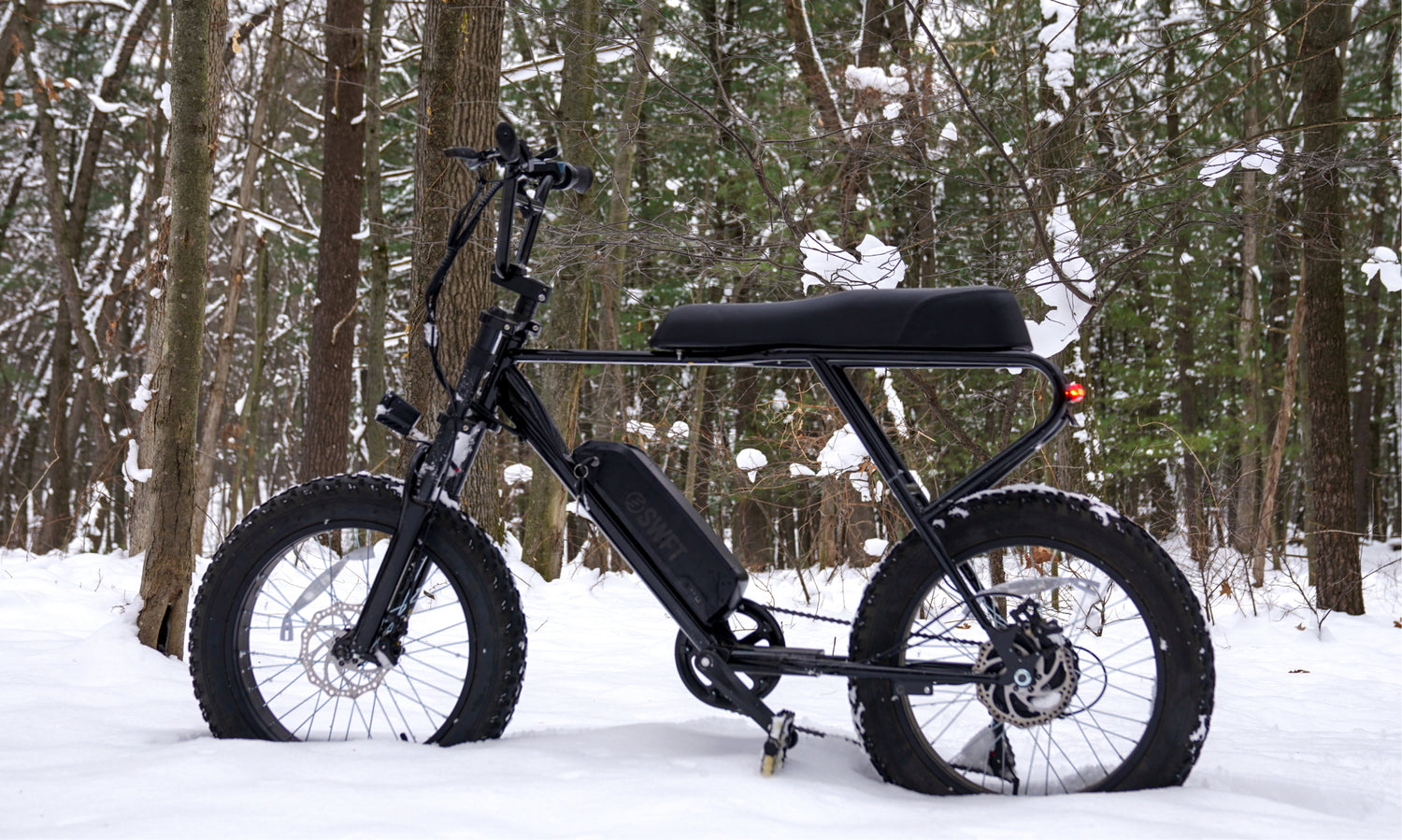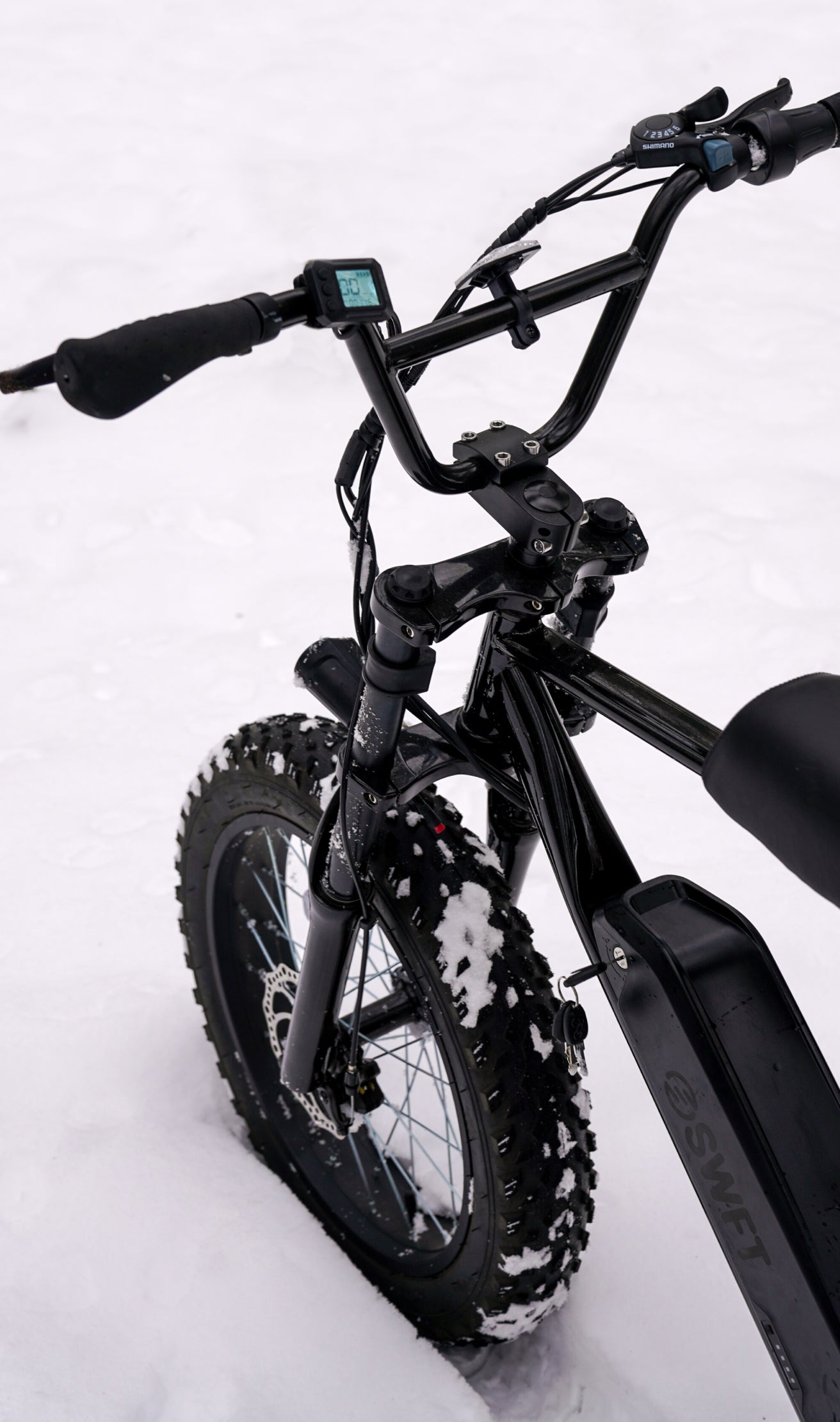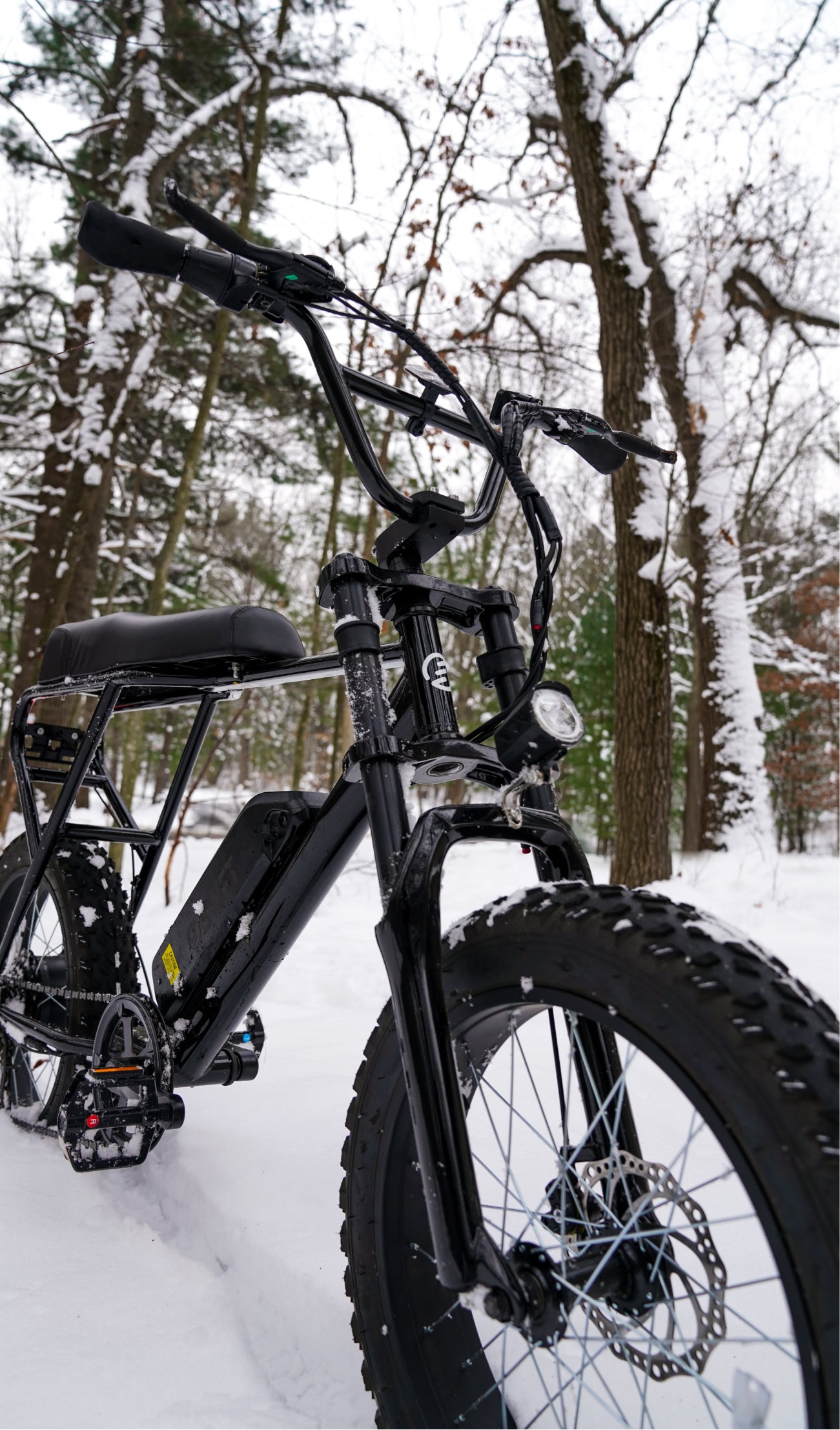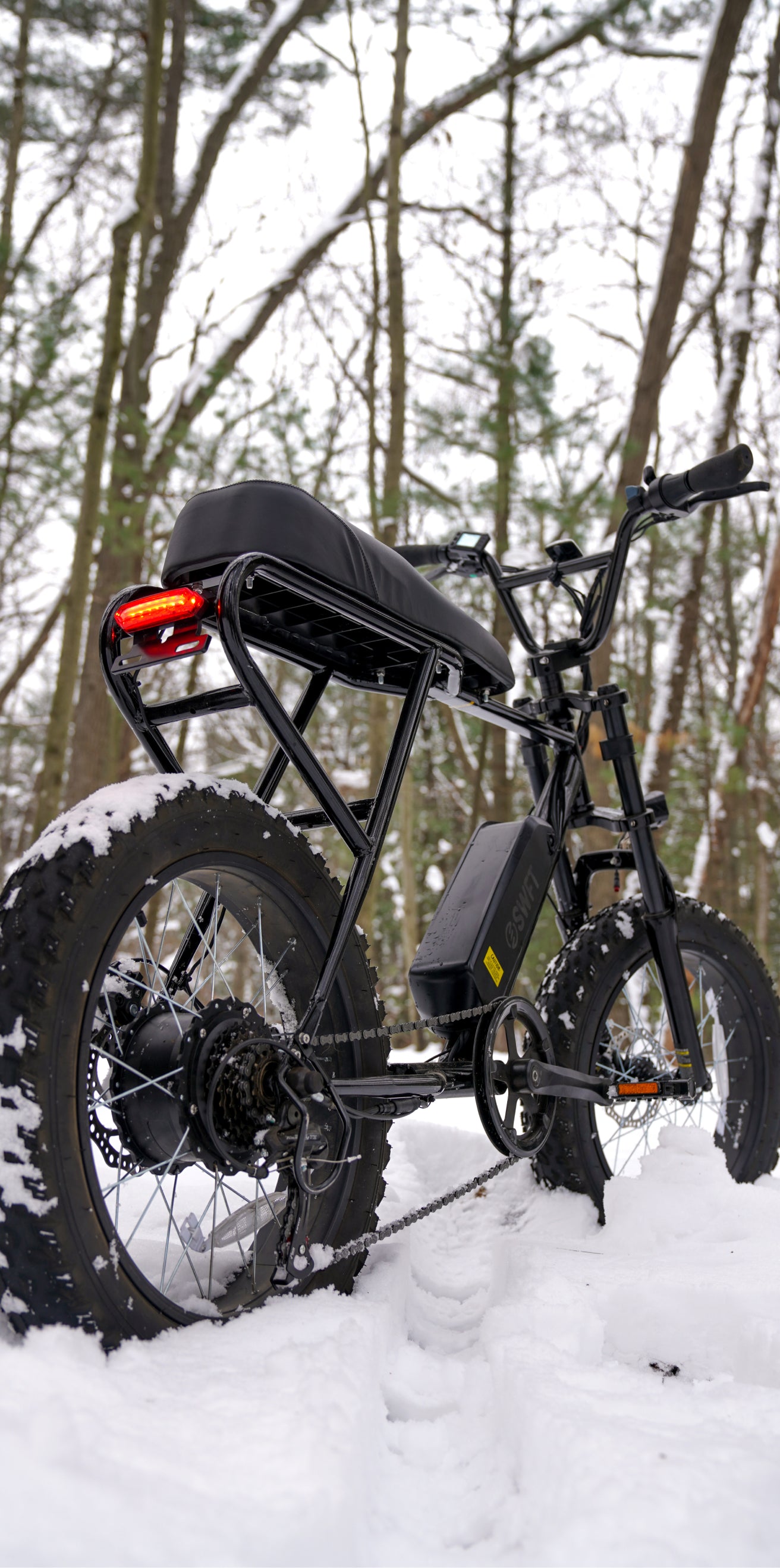In Motion: WINTER E-BIKE MAINTENANCE
January 18, 2023
WINTER E-BIKE MAINTENANCE


BATTERY CARE
The most common question asked to our customer service team is about the lithium-ion batteries in our e-bikes.
If it’s cold outside please allow the battery to return to room temperature before charging. Never immediately charge right after a ride as this will damage your battery. Cooler temperatures will reduce your riding range, you will not be able to maintain the same range as you would in warmer climates. To help prolong the battery life, store the battery inside after rides.
If you are not planning on riding this winter, you will most likely be storing your e-bike for the next 3 months or so. It is important to try to charge your battery to 50% power. Over the winter the battery will self-discharge slowly, so remember to check it every few weeks and recharge to 50% as needed.
Ideally, on our FLEET and ZIP models, you can remove and store your battery indoors at room temperature (55-75°F). If this is not possible, we recommend checking your battery once every two weeks and recharging to 50% as needed.
With your battery being stored this is a great time to schedule a tune up at your local bike shop. Maintenance is key to making sure your bike stays operating for many miles to come. It will also have you ready to roll when the weather gets nice!
“RIDE AS MUCH OR AS LITTLE, AS LONG OR AS SHORT AS YOU FEEL.
BUT RIDE.”

E-BIKE STORAGE
Winter can be tough on any form of transportation, and e-bikes are no exception. Cold temperatures, weather, snow, and ice can take a toll on your e-bike and proper storage is important to keep your e-bike in good condition until the weather warms up.
Here are a few storage tips to keep in mind for those of you not riding your e-bikes in winter.
- Store your e-bike in a dry place. Moisture can cause rust or damage to both your electrical components, or lead to rust.
- Lubricate your chain. Before you store your e-bike, make sure you are lubricating your chain to help prevent rust, and ensure it’s ready to ride.
- Check your tires. Make sure your tires are properly inflated prior to storing your e-bike and in good condition.
- Check on your e-bike regularly. Even if your e-bike is stored indoors, it is a good idea to check on it every few weeks to make sure you don’t see any issues, and it also gives you a chance to charge your battery.
- If you are storing your e-bike outdoors, use a bike cover. Use a weatherproof cover to protect your e-bike from rain, snow, and other weather.
- Clean your e-bike! Before long-term storage, give your e-bike some TLC. A thorough cleaning can remove dirt and grime and prevent rust.

WINTER RIDING TIPS
If you are planning on taking your e-bike out during winter months, please make sure you are riding safely. Here are some safety tips and reminders for winter rides!
- Wear multiple layers. Stay warm when you’re riding, and wearing multiple layers allow you to adjust for changes in temperature. Wear a waterproof outer layer to protect against the elements.
- Protect your hands and feet! Invest in a good pair of winter gloves that still give you enough grip and control of your handlebars, and a good pair of wooly socks to keep your feet warm and dry.
- Check your equipment. Make sure your e-bike is in good working order before and after each ride. Make sure you follow our tips for battery care, and keep your e-bike lubricated and tuned-up during winter.
- Take it slow. Wet winter conditions can be unpredictable, so be prepared for slippery surfaces. On the ZIP, make sure you’re using a lower gear when riding.
- Stay visible. Make sure you have your headlights on so other riders and drivers can see you. (Hold the up button on your display for 3 seconds to turn your headlights on and off.)
- Know your limits. If the weather or road surface is particularly bad, it may be unsafe to ride. Wait for conditions to improve, or postpone your ride for another day!
- Know your e-bike and your trip distance! Don’t forget, cooler temperatures will reduce your riding range (if you’re using the battery to power your motor), and you will not be able to maintain the same range as you would in warmer climates.
Stay safe while you’re riding!
